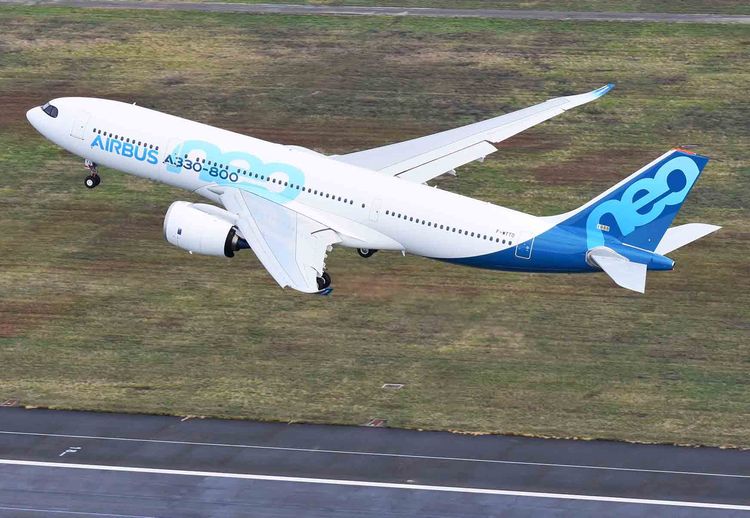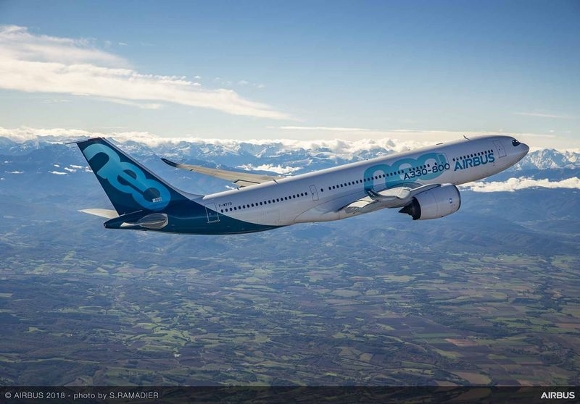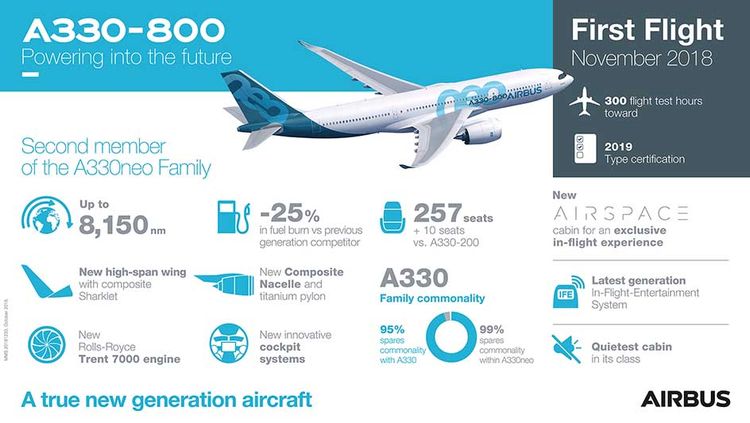The first Airbus A330-800 commercial jet, flight test aircraft MSN1888, took off today from Toulouse-Blagnac Airport on its maiden flight over southwestern France during which the aircraft performed dedicated flight-physics tests required for the variant.
Experimental Test Pilots Malcolm Ridley and François Barre and Test-Flight Engineer Ludovic Girard manned the cockpit, while Catherine Schneider and Jose Corugedo Bermejo monitored the aircraft systems and performance in real time at the flight-test-engineer’s (FTE’s) station.

The A330-800’s certification development program is now underway, and is expected to last around 300 flight-test hours, paving the way for certification in 2019.
Its larger A330-900 sibling has completed its development testing and certification program, which validated the A330neo family’s common engines, systems, cabin, and flight and ground operations.
The A330neo is the latest generation of Airbus’ widebody family, launched in July 2014, and builds on the A330ceo’s economics, versatility, and reliability while reducing fuel consumption by a further 14 percent per seat, company officials say.

The NEO’s two versions – the A330-800 and A330-900 – will accommodate 257 and 287 passengers, respectively, in a three-class seating layout; are powered by the latest-generation Rolls-Royce Trent 7000 engines; offer new “airspace” cabin amenities; and feature a new larger span wing with Sharklet wingtip devices.

Airbus has received more than 1,700 orders for the A330 from 120 customers. More than 1,400 A330s are flying with over 120 operators worldwide. The A330neo is the latest addition to the Airbus widebody family, which also includes the A350 XWB and the A380.
Airbus provides aeronautics, space, and related services; the company offers a comprehensive range of passenger airliners from 100 to more than 600 seats. Airbus also provides tanker, combat, transport, and mission aircraft, as well as space and helicopter solutions worldwide.
